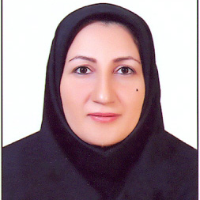Changes in CAT gene expression of and catalase enzyme activity under drought stress in lentil (Lens culinaris Medik) cultivars
Lentil is one of the oldest sources of human food. Since around 25% of the daily protein requirement of the developing world's peoples comes from legumes, considering to significant percentage of protein (about 23%) and high amino acids content of alpha-hydroxy- ornitin, alpha-hydroxy-arginine and hemoarginine in addition to ordinary amino acids in lentils, this plant commonly known as good protein supplements. Drought stress as one of the most important non-biological stresses causes an average of 50% reduction in crop yield in the world. In Iran is also faces a shortage of water in many areas due to climate characteristics and more than half of the country's land are in arid and semi-arid areas. Research on lentil has shown that this plant is more sensitive to drought during advanced stages of growth than the early stages, and it seems that the adaptation of this period to the end of the season is the main cause of its reduced yield. Therefore, achieving genotypes that are able to resist drought condition can significantly prevent crop yields. It has been observed that, under drought stress conditions, the activity of antioxidant enzymes in tolerant plants is much higher compare to sensitive plants. It seems antioxidant enzymes have an important role in tolerance to drought stress. Therefore, in this study, the effects of drought stress on catalase enzyme activity and CAT gene expression pattern in three lentil cultivars (Kimia, Gachsaran and L7) in both stages of vegetative and reproductive were studied.
The experiment was performed in a completely randomized design with three replications for three levels of drought stress (without drought stress, stress in the vegetative stage and stress in the reproductive stage) and analyzed in factorial experiment. Young leaf tissues were used for RNA extraction, samples were transferred to ribonuclease free microtubules and stored at 80°C. The total RNA extraction was performed using the Denazist Total RNA isolation kit. To eliminate the possible contamination of the genomic DNA from extracted RNA samples, the samples were treated with DNaseI enzyme. An agarose gel electrophoresis was used to confirm the quality and quantity of RNA samples. Synthesis of the first strand of cDNA was performed using DNA synthesis kits, RB MMLV Reverse Transcriptase, manufactured by RNA Biotechnology Company. Two specific primers CAT (Catalase) and ACT (Actin) (internal control gene) were used to analyses the gene expression. In this reaction, the RB SYBR qPCR kit containing SYBR® Green I Dye was used manufactured by RNA Biotechnology Company. The reaction was carried out using Thermocycler Applied Biosystem, Model Step One 48 well by Comparative Ct (ΔΔCt) method and according to the methodology presented by the manufacturer. The threshold cycle (Ct) for each sample was determined by the device, then the data were analyzed by relative quantitative method by Pfaffl et al. (2002). The activity of catalase enzyme was measured by Aebi (1984) method. Analysis of Real Time PCR data was performed using Excel and LinRegPCR softwares. The SAS software was used to analyze the variance of the data. Comparison of the averages was performed using the least significant difference (LSD) method at the 5% probability level.
Based on the obtained result, there was no significant difference between the cultivars of lentil in control treatment (no drought stress) for catalase activity. By applying drought stress, the activity of catalase enzyme increased in all three cultivars. The highest activity of catalase was observed in L7 (Twice as much as the control) and Kimia and Gachsaran cultivars were significantly different from the L7 cultivar. Significant differences were observed between the cultivars in CAT gene expression. The L7 cultivar with 1.7 showed the highest gene expression and Kimia and Gachsaran cultivars had the lowest CAT gene expression with 0.95 and 0.94, respectively. Gene expression level at reproductive stage was increased to 0.39 in compared to vegetative stage. Drought stress increased the CAT gene expression significantly (about 1.6 times of control). In both vegetative and reproductive stages, L7 cultivar had the highest gene expression with rate of 1.39 and 2.2, respectively. Investigating the interaction of drought stress with cultivar showed that there was no significant difference between Gachsaran and Kimia cultivars in control and stress conditions in terms of gene expression level, while in both control and stress conditions, L7 cultivar showed the significant difference.
Based on the results of this study, in all three lentil cultivars, the gene expression pattern showed high correlation with physiological results. Due to the fact that expression of CAT gene in other cultivars causes drought resistance, it is expected that more resistance will be observed in the cultivars by increasing the expression during drought stress. Under stress conditions, L7 cultivar showed higher catalase activity in both vegetative and reproduction stages than the other two cultivars. Therefore, it seems that L7 cultivar is more tolerant to drought stress than Kimia and Gachsaran cultivars.
- حق عضویت دریافتی صرف حمایت از نشریات عضو و نگهداری، تکمیل و توسعه مگیران میشود.
- پرداخت حق اشتراک و دانلود مقالات اجازه بازنشر آن در سایر رسانههای چاپی و دیجیتال را به کاربر نمیدهد.




